The making and sharing of a bowl of tea give rise to a profound aesthetic experience–Kakuzo Okakura
John and Sunai Chambers held their annual open house again last weekend, and Sunai served tea on Sunday. One of the little pleasures of participating in tea ceremony with Sunai is that John made many of the tea utensils she uses, including the chawan or tea bowls. The ceremony is different each year depending on who sits for tea. Last year we sat with a couple who travel frequently to Japan and know all the famous potters. They brought back a tea bowl made by a renowned potter. I was thoroughly imtimidated by them. This year my friend and I shared the tatami with two friendly women, Sally and Julie, who did not bring their own tea bowls. Sally had been to Japan recently and taken tea at a temple, served by monks, but was still pretty much a novice.
Later, Sunai graciously let me take pictures while she cleaned up and prepared for another tea service. She let me dazzle her with flashes and bombard her with questions at the same time—she’s a generous person.
Sunai’s natsume or tea caddy looks like a persimmon. That’s probably because of the orange lacquer as well as the shape. The caddy was a gift from a friend of Sunai’s who has since passed away; I think for Sunai, using it is a way of keeping her friend near.
The chasen or whisk, shown above inside the tea bowl, is made from one stalk of bamboo. The shaping of the slim blades of the whisk give it a flower-bud appearance.
John makes the furo, or braziers to heat the water. His design has an electric heating element in the base, making it more convenient, and probably a little bit safer, than the charcoal kind particularly indoors. He made this one, and the kama, or kettle that hold the heated water that rests inside it.
Last year, Sunai served bean curd cake, a bright purple confection, with the tea. Each person sitting for tea gets a square of the sweet. You are encouraged to eat it first. The tea can be bitter and the sweet provides a balance. This year she had a California sweet, some translucent candied fruit gel that I’ve had before but can’t place.
Macha tea is made from the tips of the young tea plants, and is considered the finest and most delicate tea. Sunai told us that it is heat sensitive and that water too hot damages the flavor. She heated water in the kama, then added cold water from the mizusashi to get exactly the temperature she wanted.
Sunai cleaned each tea bowl as it was returned to her. She rinsed it with water from the mizusashi and cleansed it with the square of cloth called the chakin. The rinse water is stored in the kensui. She placed the kensui at her side and it was the one utensil we really could not see.
She used another cloth to clean the chasuku, the slender tea scoop used to transfer the macha powder from the caddy into the tea bowl, and the dipper or hishaku. The hishaku is long and elegant, and after she has poured steaming water into the tea bowl, Sunai rests it on the lid of the kama. I love the hishaku. I don’t know why, I just do.
This time, Sunai told us that the classic tea practitioners will say that a bowl of tea must be drunk in three and a half sips. The first sip is for Buddha. The second sip is for the tea maker. The third sip is for your ancestors. The final tiny sip is for yourself.

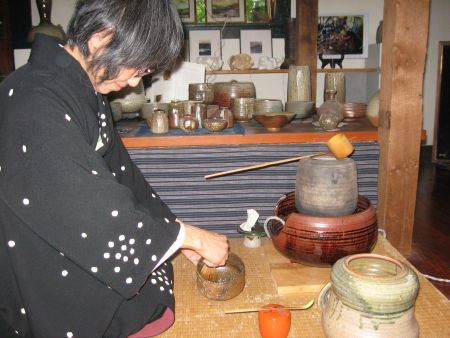
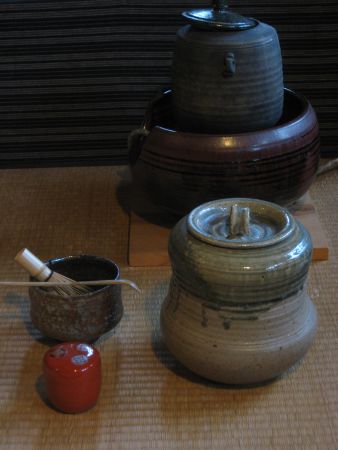
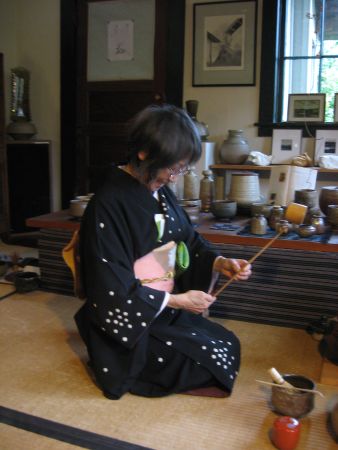
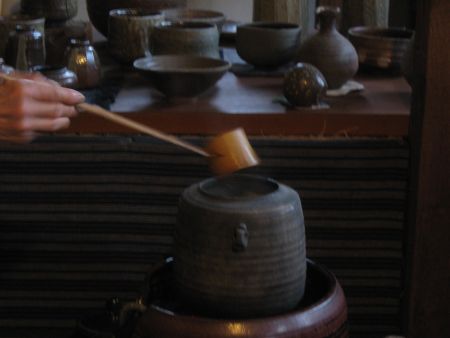
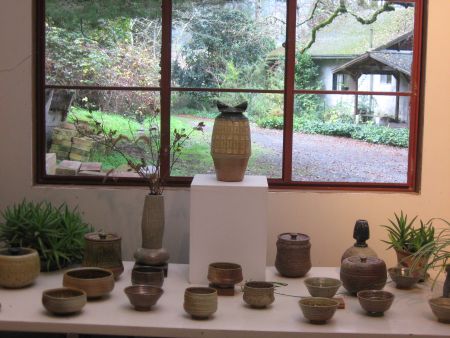
This does indeed sound like a profound aesthetic experience!